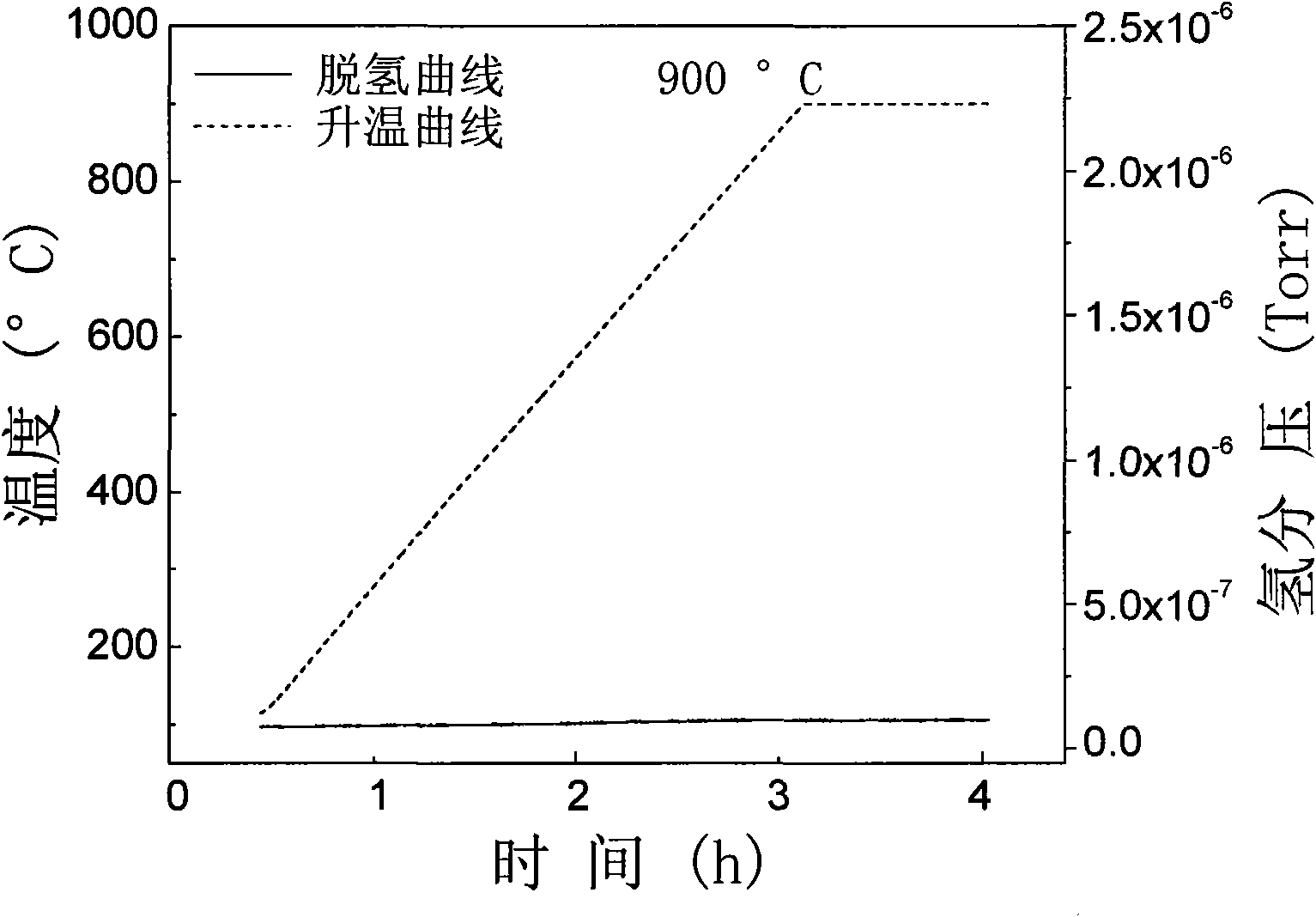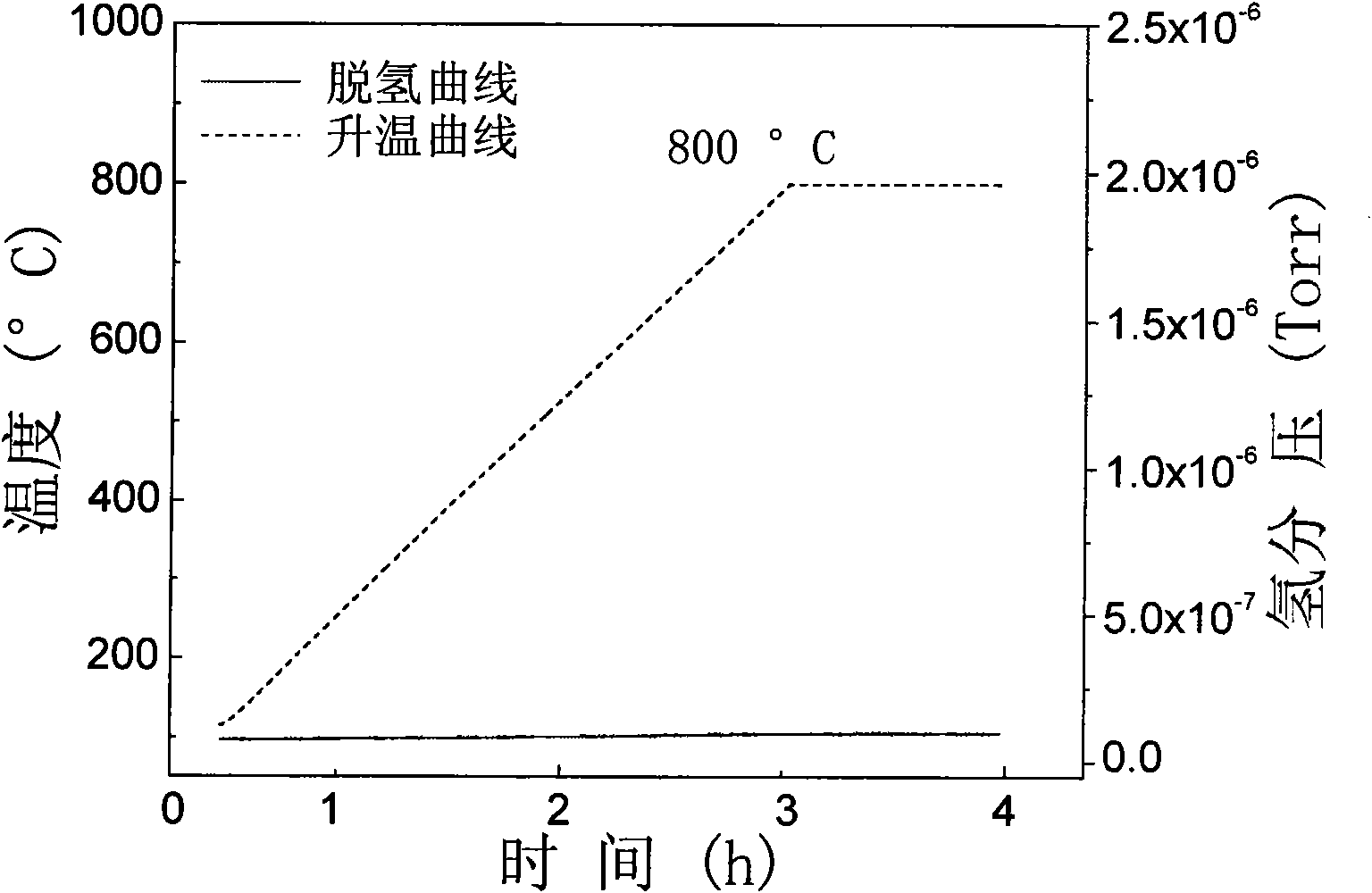Method for preparing zirconium hydride
A zirconium hydride, oxidizing technology, applied in the direction of transition element hydride, etc., can solve the problems of micro-cracks in the matrix, easy cracking and peeling of the film layer, and difficulty in the hydrogen barrier film layer. Effects of the hydrogen problem
- Summary
- Abstract
- Description
- Claims
- Application Information
AI Technical Summary
Problems solved by technology
Method used
Image
Examples
Embodiment 1
[0029] Cut zirconium hydride with a hydrogen-zirconium atomic ratio of about 1.8 into a Φ20mm×10mm cylindrical sample. The samples were ultrasonically cleaned with acetone for 15 minutes and then dried.
[0030] The pretreated zirconium hydride sample is placed in a vacuum tube resistance furnace for high-temperature thermal oxidation treatment, so that a zirconium oxide hydrogen barrier film layer is formed on the surface of the zirconium hydride. The specific steps are as follows: put the zirconium hydride sample into a stainless steel crucible, then put it into a vacuum tube resistance furnace, start the mechanical pump, vacuumize, extract the air in the crucible, and then inject CO into the crucible. 2 To 0.1MPa, start heating. The heating rate during the heating process is 1°C / min. When the temperature reaches 350°C, keep it warm for 60 hours, then cut off the power supply, and cool down with the furnace to form a zirconia hydrogen barrier film layer.
[0031] The oxidi...
Embodiment 2
[0033] Cut zirconium hydride with a hydrogen-zirconium atomic ratio of about 1.8 into a Φ20mm×10mm cylindrical sample. The samples were ultrasonically cleaned with acetone for 20 minutes and then dried.
[0034] The pretreated zirconium hydride sample is placed in a vacuum tube resistance furnace for high-temperature thermal oxidation treatment, so that a zirconium oxide hydrogen barrier film layer is formed on the surface of the zirconium hydride. The specific steps are as follows: put the zirconium hydride sample into a stainless steel crucible, then put it into a vacuum tube resistance furnace, start the mechanical pump, vacuumize, extract the air in the crucible, and then inject CO into the crucible. 2 To 0.1MPa, start heating. The heating rate during the heating process is 5°C / min. When the temperature reaches 600°C, keep it warm for 30 hours, then cut off the power supply, and cool down with the furnace to form a zirconia hydrogen barrier film layer.
[0035] The oxidi...
Embodiment 3
[0037] Cut zirconium hydride with a hydrogen-zirconium atomic ratio of about 1.8 into a Φ20mm×10mm cylindrical sample. The samples were ultrasonically cleaned with acetone for 20 minutes and then dried.
[0038] The pretreated zirconium hydride sample is placed in a vacuum tube resistance furnace for high-temperature thermal oxidation treatment, so that a zirconium oxide hydrogen barrier film layer is formed on the surface of the zirconium hydride. The specific steps are as follows: put the zirconium hydride sample into a stainless steel crucible, then put it into a vacuum tube resistance furnace, start the mechanical pump, vacuumize, extract the air in the crucible, and then inject CO into the crucible. 2 To 0.1MPa, start heating. The heating rate during the heating process is 2°C / min. When the temperature reaches 500°C, keep it warm for 40 hours, then cut off the power supply, and cool down with the furnace to form a zirconia hydrogen barrier film layer.
[0039] The oxidi...
PUM
 Login to View More
Login to View More Abstract
Description
Claims
Application Information
 Login to View More
Login to View More - R&D
- Intellectual Property
- Life Sciences
- Materials
- Tech Scout
- Unparalleled Data Quality
- Higher Quality Content
- 60% Fewer Hallucinations
Browse by: Latest US Patents, China's latest patents, Technical Efficacy Thesaurus, Application Domain, Technology Topic, Popular Technical Reports.
© 2025 PatSnap. All rights reserved.Legal|Privacy policy|Modern Slavery Act Transparency Statement|Sitemap|About US| Contact US: help@patsnap.com



